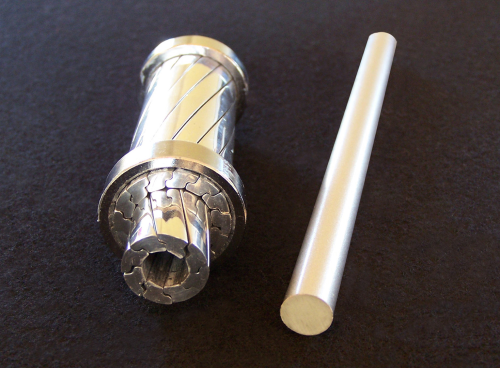
AmpStar, Harbor City, California, is a subsidiary of G.I.F.T. LLC, the successor trustee to W. Brandt Goldsworthy & Associates Inc. In the 1990s Goldsworthy invented the Composite Reinforced Aluminium Conductor (CRAC) and AmpStar is now in final stages of development of a new and improved version of this bare overhead transmission cable commonly referred to as CRAC™. Supported by two worldwide patents, CRAC is designed to offer an affordable alternative to traditional steel cored conductors and expensive composite cored conductors.
The CRAC design is a cost-effective solution for improving transmission capacity, lowering line losses, limiting sag, and reducing the need for more transmission line infrastructure.
High strength core
“The high strength composite core allows for higher aluminium compaction and the use of higher conductive annealed aluminum, which increases ampacity by up to 100%," says Mike Winterhalter, President of Ampstar.
"When compared to other composite core/conductors, including those using a hybrid carbon and glass composite, the AmpStar CRAC offers equal or better mechanical properties, higher Tg and a much reduced cost over the competition.”
The S-1 HM glass fibres used in the composite core are a new glass formulation offering the highest tensile modulus glass fibres available at 90 GPa, according to AGY.
AmpStar developed this latest version of CRAC in response to challenges from utilities to increase properties, particularly tensile properties, but keep the same beneficial pricing. The resulting design combines the properties of the S-1 HM glass and a high-temperature reactive matrix.
“The S-1 HM material is the reinforcement that meets our higher performance specifications,” explains Winterhalter.
“It has excellent tensile and modulus properties. We combine the reinforcement with a proprietary resin package that affords higher temperature operation of the core/conductor, allows for increased throughput, and has a synergistic effect with the reinforcement package. Designing a composite part, especially a tensile member, necessitates that the properties of the reinforcement and the resin system work together. This is true not just for the material properties, but for the chemical compatibility of the two as well.”
Explaining the importance of tensile strength and high-heat performance in the CRAC design, Winterhalter says: “Toughness is especially important as it directly speaks to the rod’s ability to accept hardware such as splices, and dead-ends, and how it can handle bend radius extremes. High-heat performance is essential for overhead conductors because the transmission of electricity inherently builds heat. The higher the current, the higher the heat. In contingency operations, the conductor cannot fail due to developed heat.”
Lower line loss
In addition to toughness and high-heat performance, the CRAC also has the ability to mitigate line loss.
“All conductors have some line loss,” explains Winterhalter.
“However, using a composite core can reduce the loss by as much as 30%. This increased efficiency can result in reduced carbon footprints for the power generator and a cost savings in fuel.”
As the demand for power continues to increase, re-conductoring is a more efficient way to improve transmission capacity.
“It is not possible to simply add transmission corridors to increase delivery due to the cost, and to the many environmental hurdles,” notes Winterhalter.
“So, the alternative is to re-conductor with high capacity/more efficient conductors capable of delivering more electricity on the same towers with essentially the same hardware. New lines are also being designed with an eye for efficiency. Since our conductor is stronger, the spacing and size of towers and the purchase of rights-of-way become less costly. This is a major cost advantage.”



